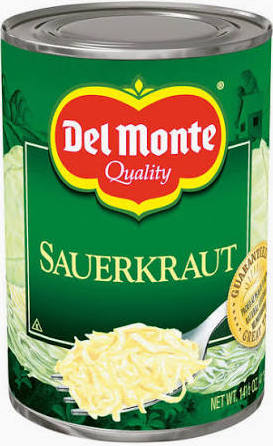 Healthline, here are 9 Healthy Legumes to Eat - Be sure to click on the link to read the full nutritional value of each legume. You'll learn that legumes are good sources, not only of protein, but fiber and minerals too. What's more, I'll link you to recipes in how I often eat each legume.
Healthline, here are 9 Healthy Legumes to Eat - Be sure to click on the link to read the full nutritional value of each legume. You'll learn that legumes are good sources, not only of protein, but fiber and minerals too. What's more, I'll link you to recipes in how I often eat each legume.Tuesday, May 20, 2025
Meet Your New Friends: Legumes
 Healthline, here are 9 Healthy Legumes to Eat - Be sure to click on the link to read the full nutritional value of each legume. You'll learn that legumes are good sources, not only of protein, but fiber and minerals too. What's more, I'll link you to recipes in how I often eat each legume.
Healthline, here are 9 Healthy Legumes to Eat - Be sure to click on the link to read the full nutritional value of each legume. You'll learn that legumes are good sources, not only of protein, but fiber and minerals too. What's more, I'll link you to recipes in how I often eat each legume.Friday, May 9, 2025
15 Cheatsheets For Smoothies, Juices, Sauces & Snacks


| 1. Romaine Lettuce Similar to celery. Keep the base of your romaine lettuce in a bowl with 1/2 inch of warm water. Let it sit in direct sunlight, and in a week or two, your lettuce stem will produce fresh, new lettuce leaves for all your great salads. Transplant your lettuce to soil to continue growing. They should be fully grown in 3 to 4 weeks. This process works for Bok Choy as well. 2. Garlic Sprouts Are those tentacles?! Nope, those long green things growing out of your garlic are green shoots. You can put them in a little water, under a lot of sunlight, and grow a bunch of garlic sprouts. They are milder in taste than garlic cloves and are great in salads, pasta, and as a garnish. 3. Carrots Plant the end of the carrot, and when it begins to sprout, take those seeds and plant them. Pretty soon, they will begin to sprout delicious greens from the top that are a nice addition to meals. Using a deeper container and more water, use toothpicks to keep carrots halfway in the water and wait for them to root. Once they root, you can plant them in your garden for a continuous supply! 4. Turnip Like carrots, cut off turnip tops and leave them in a shallow container with water until they begin growing roots. This can take a couple of weeks. Once they’ve sprouted, plant them outside the same way you would your carrots! 5. Sweet potato Unlike most vegetables, sweet potatoes aren’t started by seed but by slips (or shoots). Clean and cut a sweet potato in half, then place it half in/half out of a jar full of water using toothpicks. Over a few days, your sweet potato will begin to sprout slips at which point you remove them and place them in water to grow roots. You should have rooted slips with the week. Next, plant them in loose, well-drained soil and water every day in the first week, and then every other day (or as needed) the following weeks. |
🍋🍅🍠🥕🍊

1. Asian Honey Marinade 1/4 cup honey 2 tablespoons rice vinegar 1 teaspoon grated ginger 1 tablespoon sesame oil Instructions: Combine all ingredients in a bowl. Marinate chicken for 1-4 hours for a sweet, savory, and umami flavor. 2. Jalapeno Garlic Marinade Ingredients: 1/4 cup olive oil 2 jalapenos, seeded and finely chopped 4 cloves garlic, minced Juice of 1 lime 1 tablespoon honey Salt and pepper, to taste Instructions: Mix ingredients well. Marinate chicken for 2-4 hours for a spicy and garlicky kick. 3. Italian Marinade
Ingredients: 1/4 cup olive oil 1/4 cup red wine vinegar 1 tablespoon Italian seasoning 2 cloves garlic, minced 1 teaspoon dried oregano Salt and pepper, to taste Instructions: Combine and marinate chicken for 30 minutes to 2 hours. Expect a classic, zesty Italian flavor. 4. Fajita Marinade Ingredients: 1/4 cup olive oil Juice of 2 limes 1 tablespoon chili powder 1 teaspoon cumin 1/2 teaspoon paprika 1/2 teaspoon cayenne pepper (optional) 2 cloves garlic, minced Instructions: Whisk ingredients together. Marinate chicken for 1-3 hours to get the vibrant, tangy, and spiced fajita flavor. 5. Honey Mustard Marinade Ingredients: 1/4 cup Dijon mustard 1/4 cup honey 2 tablespoons apple cider vinegar 1/4 cup olive oil Salt and pepper, to taste Instructions: Mix all ingredients. Marinate chicken for 1-2 hours. The result is sweet, tangy, and creamy. 6. Nashville Hot Marinade Ingredients: 1/2 cup buttermilk 1/4 cup hot sauce 1 tablespoon paprika 1 tablespoon brown sugar 1/2 teaspoon cayenne pepper (adjust to taste) 1 teaspoon garlic powder Instructions: Combine ingredients, and marinate chicken for at least 1 hour. Expect spicy, smoky, and slightly sweet notes. 7. Teriyaki Marinade Ingredients: 1/3 cup soy sauce 1/4 cup brown sugar 2 tablespoons mirin (optional) 1 teaspoon grated ginger 2 cloves garlic, minced 1/4 cup water Instructions: Mix until sugar dissolves. Marinate chicken for 1-4 hours for a traditional, sweet-savory glaze. 8. Cilantro Lime Marinade Ingredients: 1/4 cup olive oil Juice of 2 limes 1/4 cup fresh cilantro, finely chopped 2 cloves garlic, minced 1 teaspoon cumin Salt and pepper, to taste Instructions: Blend all ingredients. Marinate chicken for 30 minutes to 2 hours for a bright, zesty, and herbaceous flavor. |
🍋🍅🍠🥕🍊


Hope you learn a tip or two from these cheatsheets.
Friday, March 14, 2025
6 Canned Produce I Like
But guess what? There are canned foods I don't mind or like better than their fresh, or refrigerated, or frozen versions. I'll list 6 of them below.
6 Canned Produce I Like:
 1) Sauerkraut - Canned sauerkraut isn't as raw as it is bagged and refrigerated at the supermarket. Still sufficiently sour yet not as intensely sour or crunchy as unblanched bagged sauerkraut.
1) Sauerkraut - Canned sauerkraut isn't as raw as it is bagged and refrigerated at the supermarket. Still sufficiently sour yet not as intensely sour or crunchy as unblanched bagged sauerkraut. 2) Refried beans - I see little difference in taste or texture between canned beans and dried beans you soak and tenderize yourself. With refried beans, I like the convenience, and unless you cooked a huge amount, the extra cost of buying them canned is minor. For soups or sometimes chili, I will use either canned or dried beans depending on how much I'm making.
3) Pumpkin, puree - Who in their right mind would unseed, clean, cook, and scrape the flesh out of a fresh pumpkin to use in a dish? Oh, the many steps and mess!😳4) Tomatoes, whole plum, diced, or crushed for cooking - Cheap and you have the same consistency every time when making sauces.






















